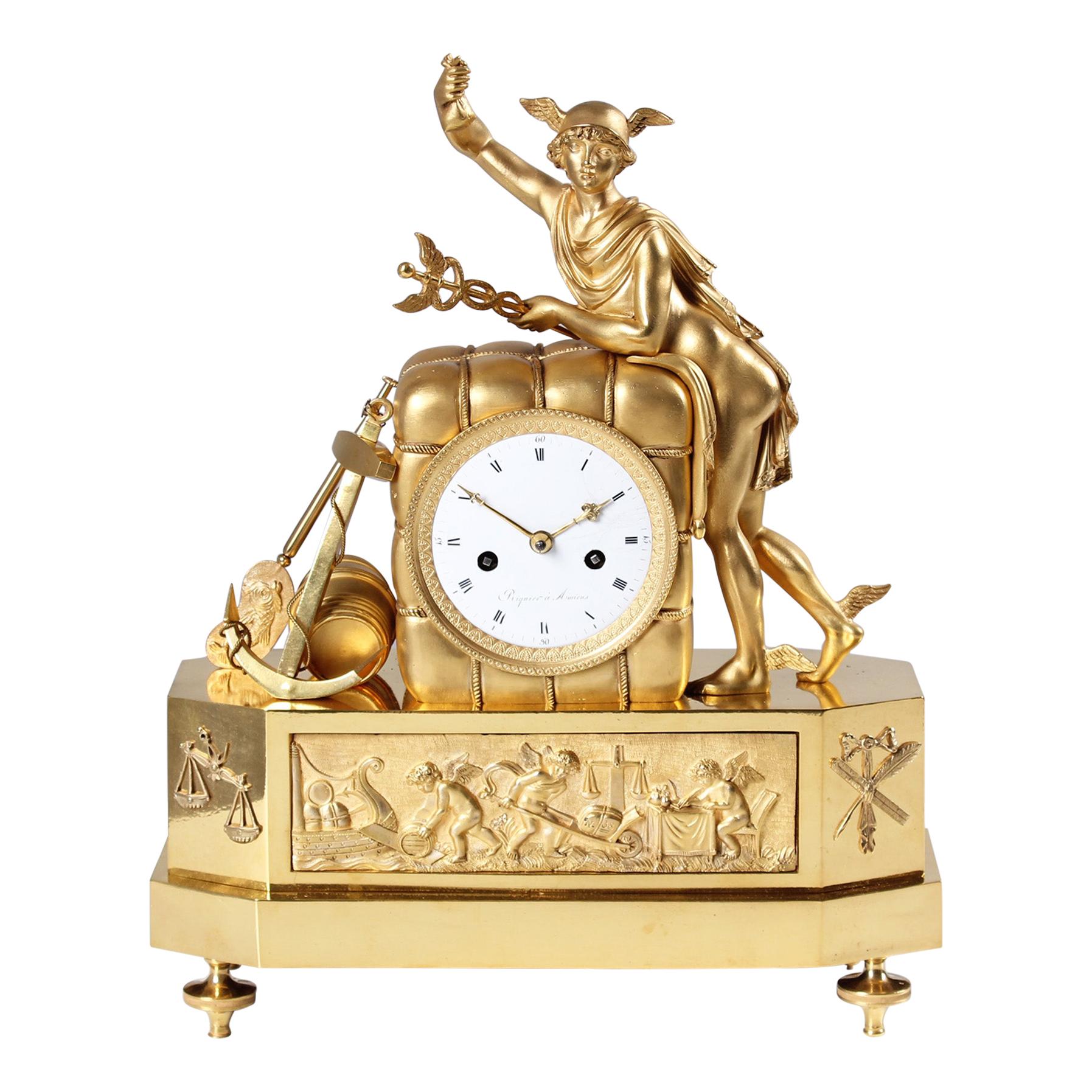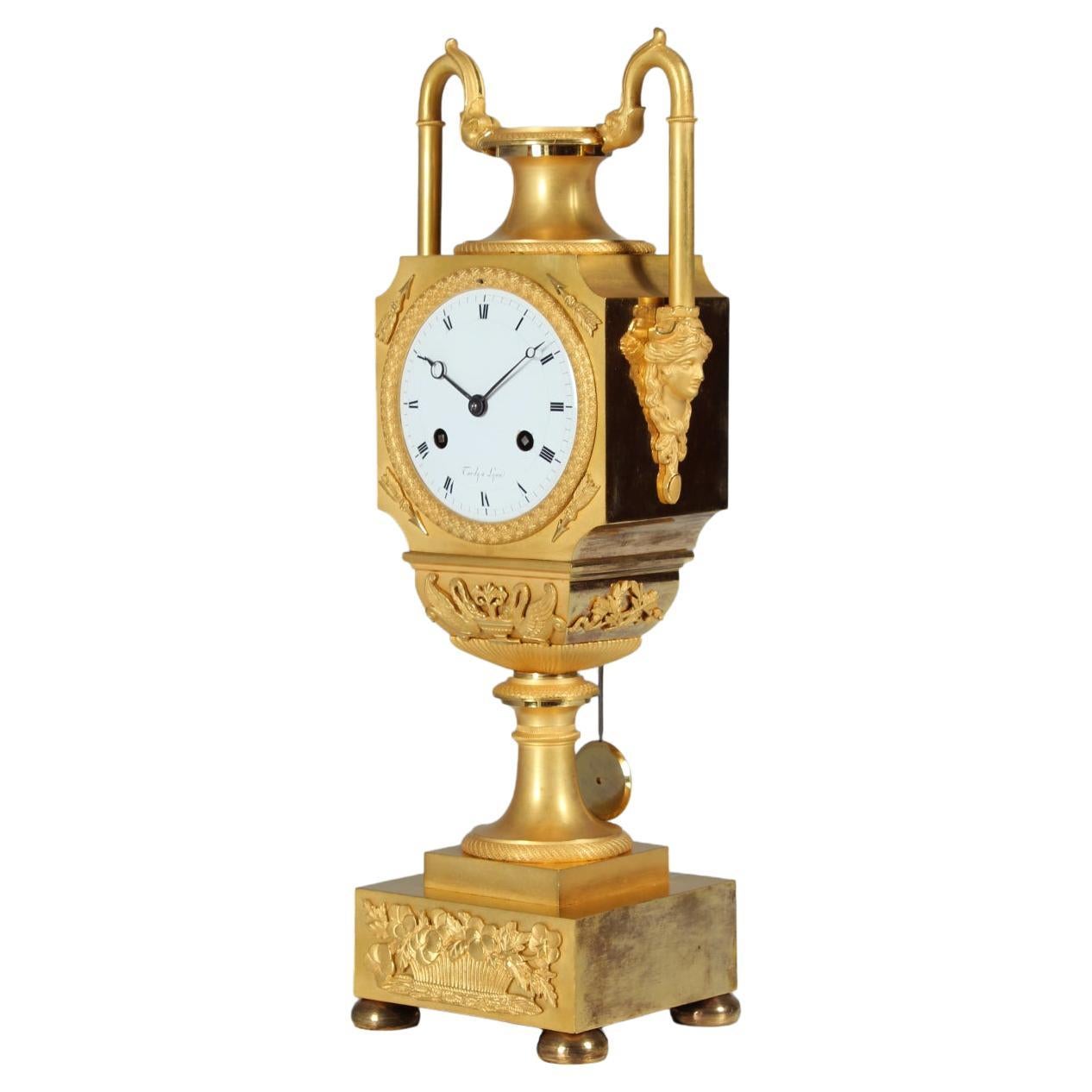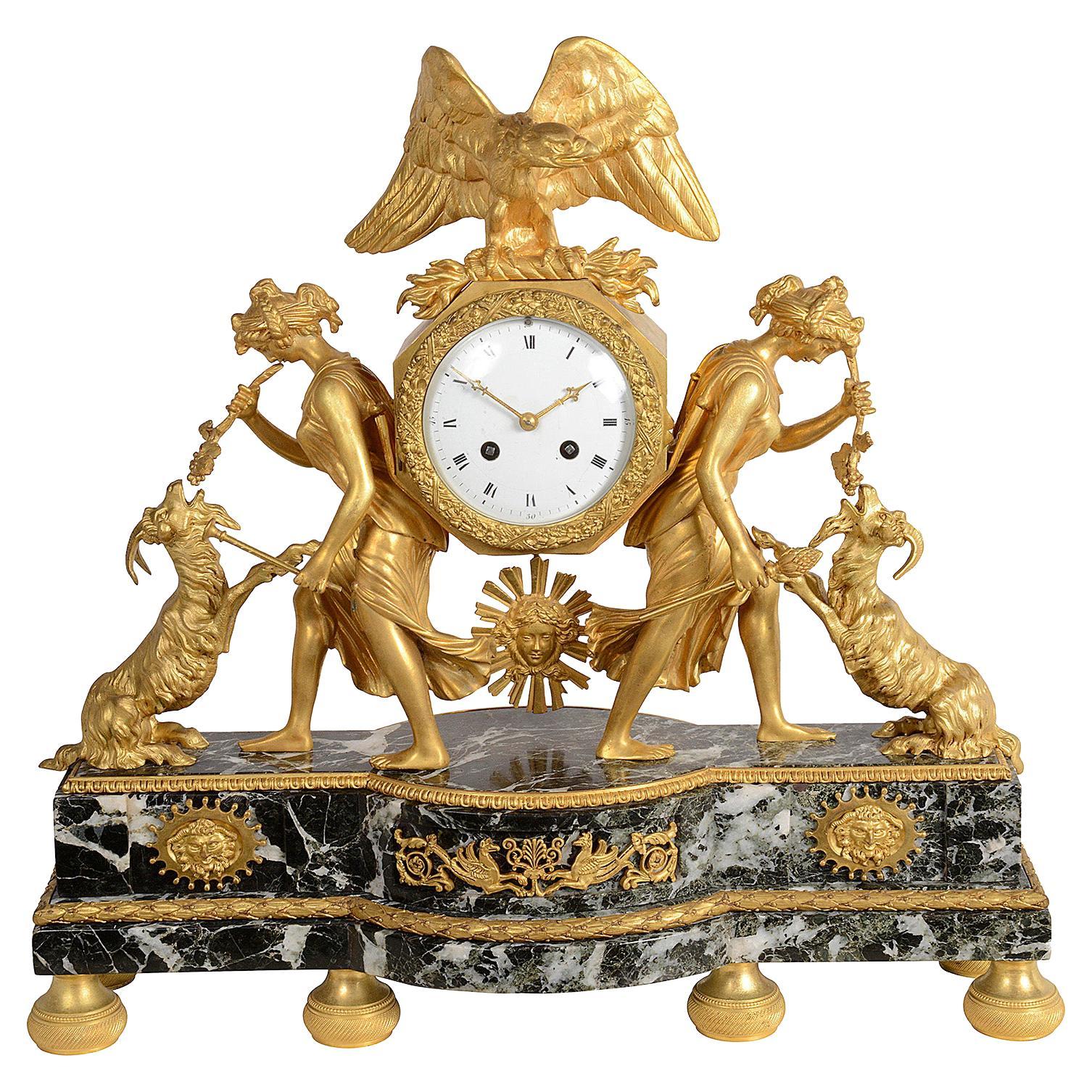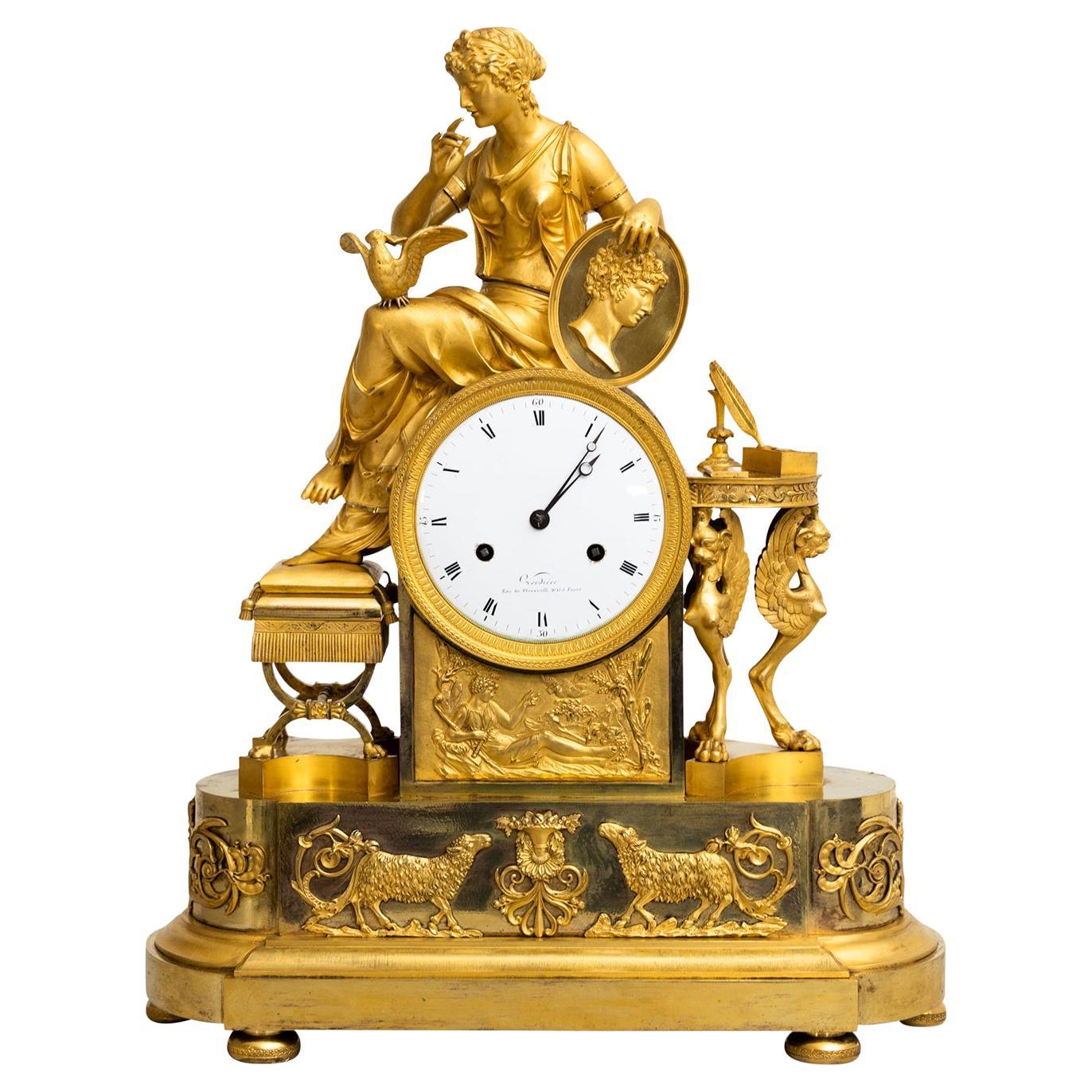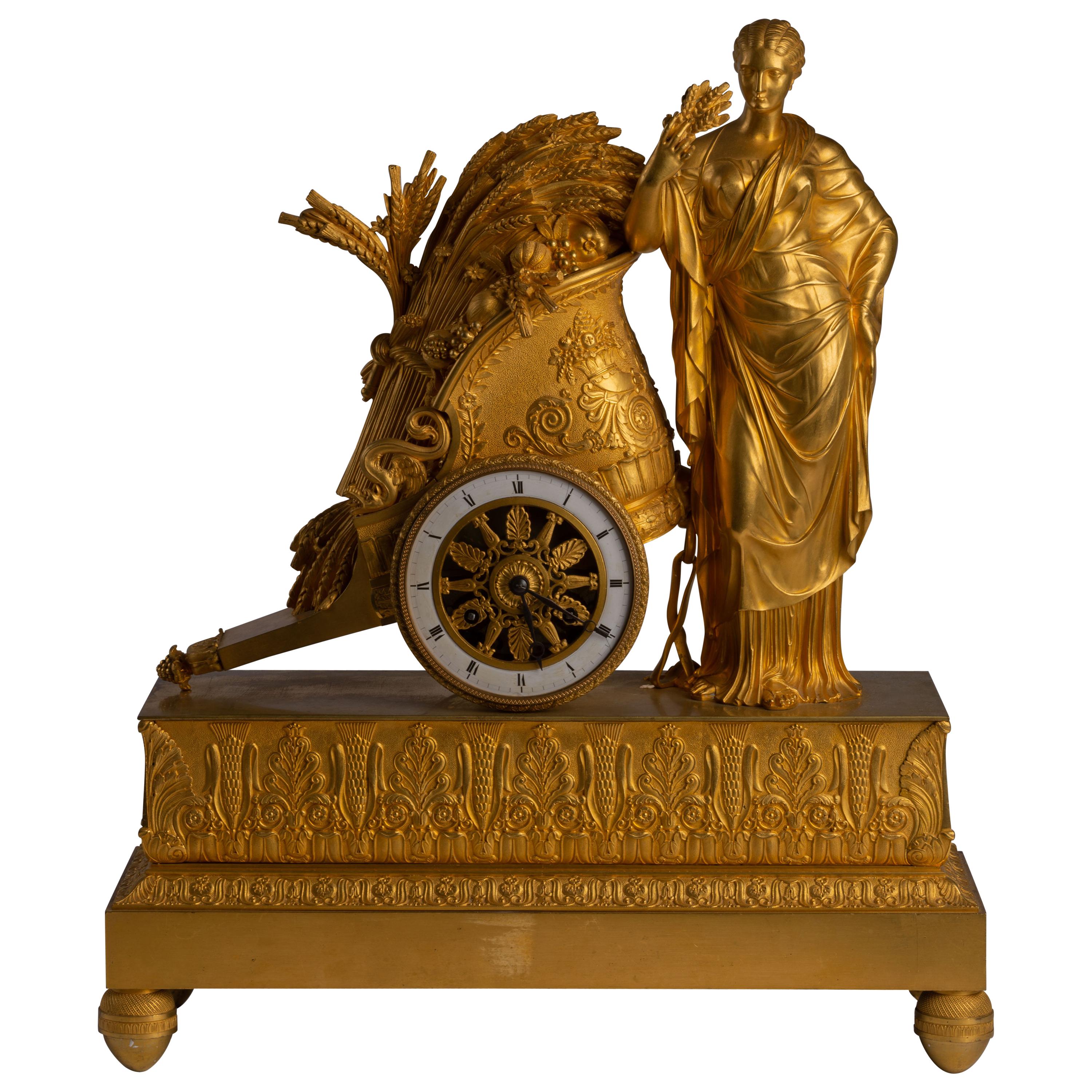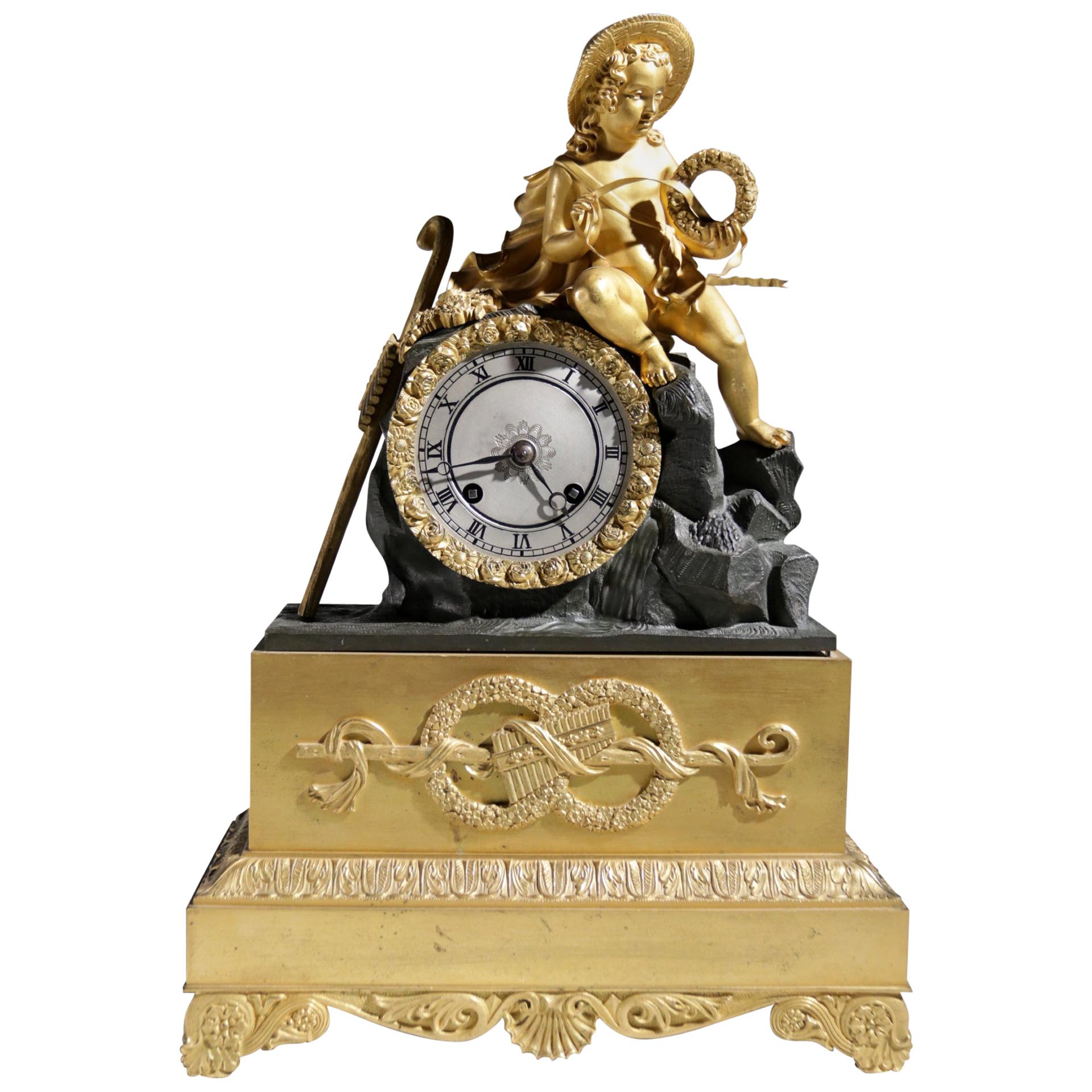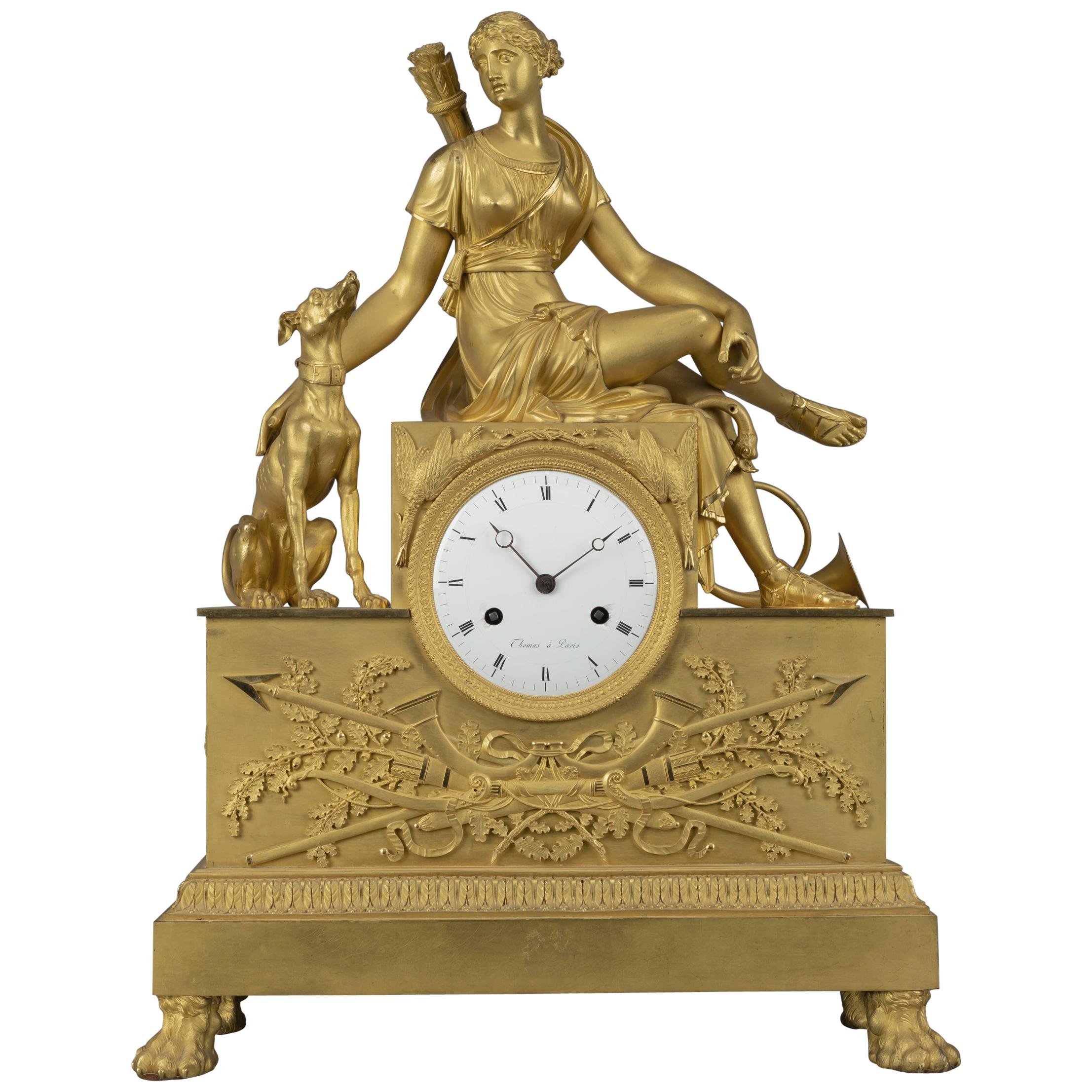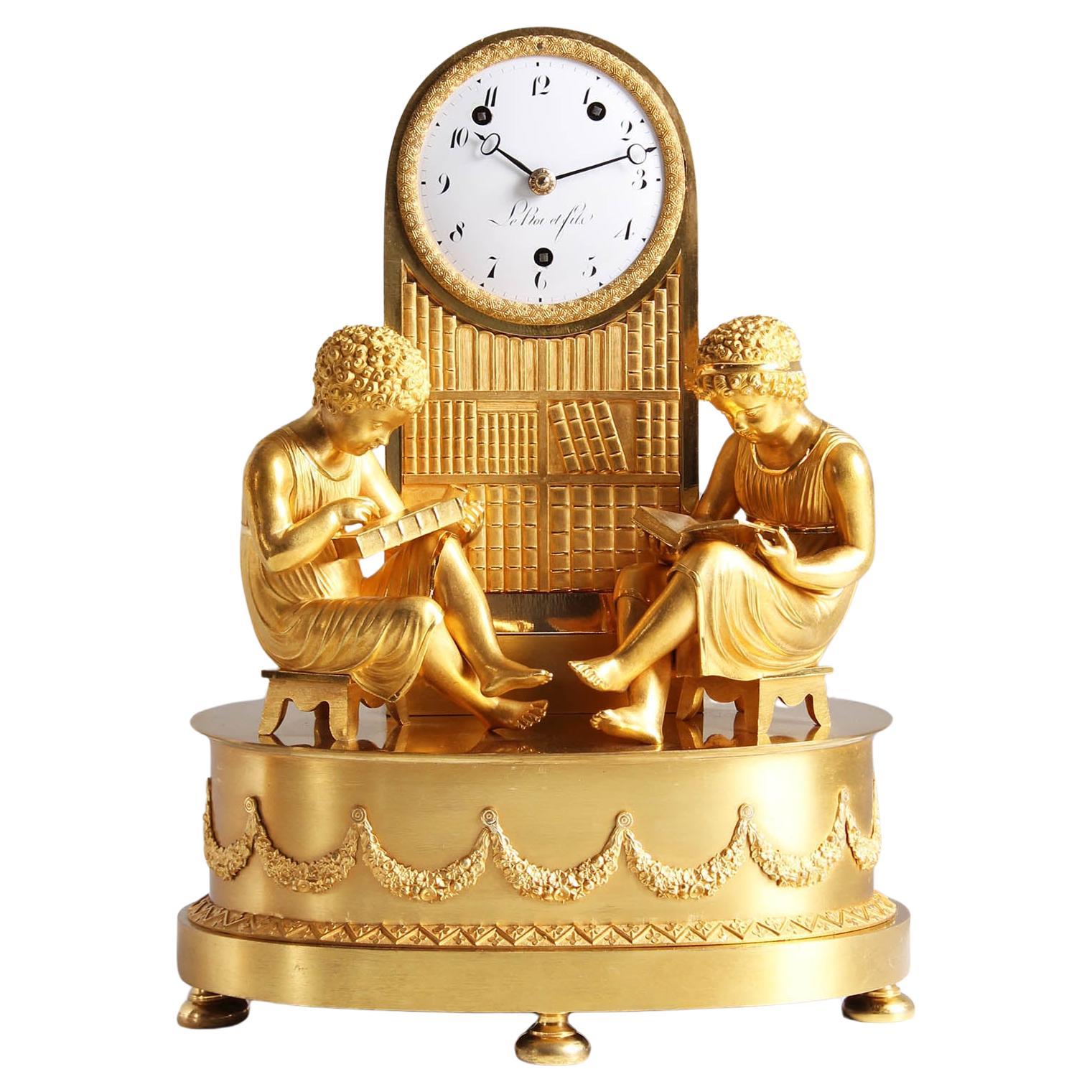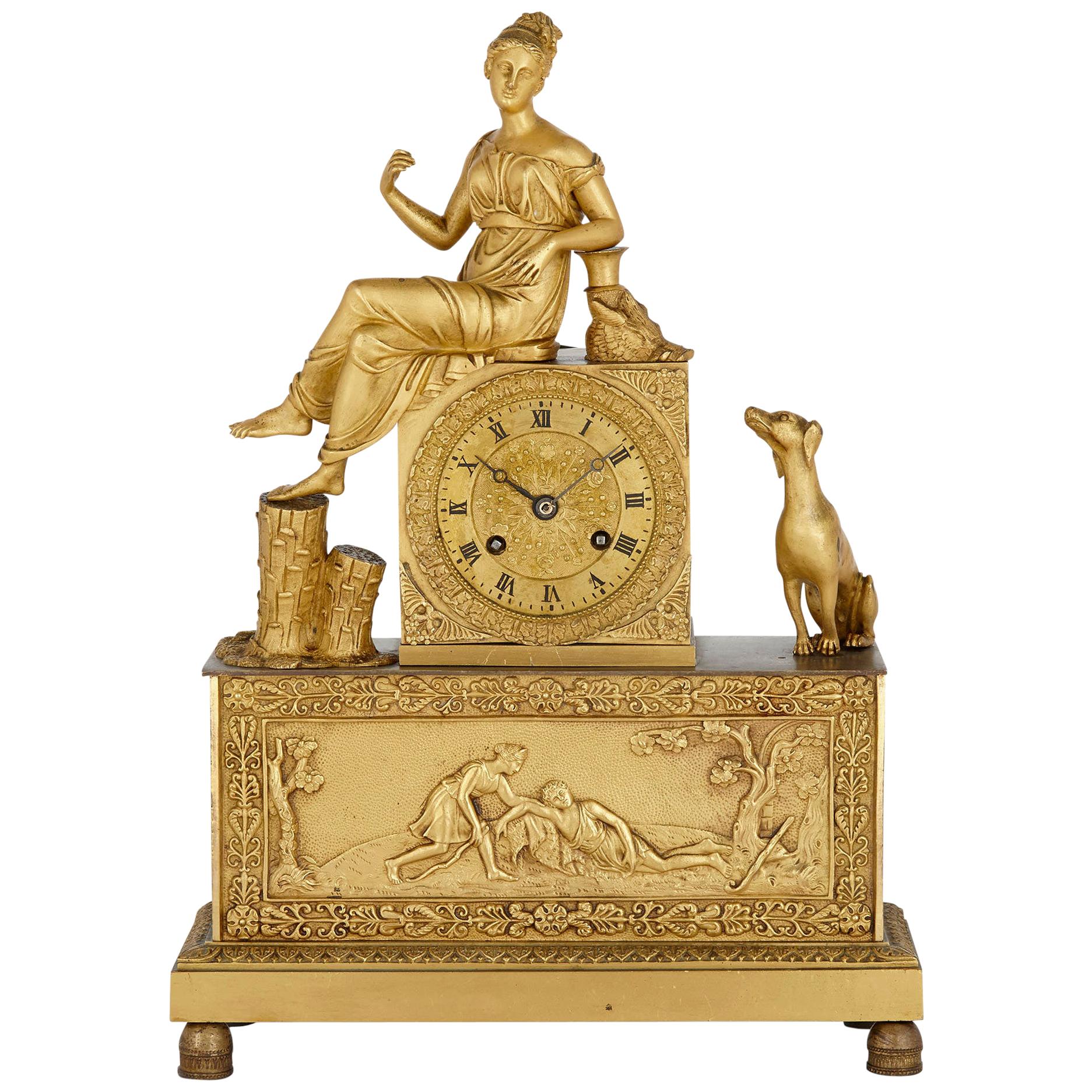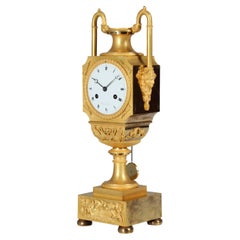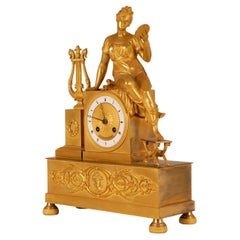
French Bronze Clock, Empire Pendule, Circa 1820
View Similar Items
Video Loading
Want more images or videos?
Request additional images or videos from the seller
1 of 16
French Bronze Clock, Empire Pendule, Circa 1820
About the Item
- Dimensions:Height: 12.21 in (31 cm)Width: 10.24 in (26 cm)Depth: 3.94 in (10 cm)
- Style:Empire (Of the Period)
- Materials and Techniques:
- Place of Origin:
- Period:
- Date of Manufacture:1820
- Condition:Refinished. Wear consistent with age and use. Perfect technical and optical condition. The movement has been cleaned and overhauled, it runs accurately and reliably.
- Seller Location:Greven, DE
- Reference Number:1stDibs: LU5419229386252
About the Seller
5.0
Platinum Seller
These expertly vetted sellers are 1stDibs' most experienced sellers and are rated highest by our customers.
Established in 2014
1stDibs seller since 2020
114 sales on 1stDibs
More From This SellerView All
- 19th French Empire Mantel Clock, Pendule, Mercury, Gilded Bronze, circa 1815Located in Greven, DE19th century French pendule, mantel clock - Mercury the messenger of the gods France Bronze gilded Empire around 1815 Dimensions: H x W x D: 37 x 30 x 10 cm Description: French Empire...Category
Antique Early 19th Century French Empire Mantel Clocks
MaterialsBronze
$6,737 Sale Price30% Off - Early 19th Century Vase Pendule, Pendulum-Clock, Tardy à Lyon, Empire circa 1820Located in Greven, DEAntique vase clock France Fire gilded bronze Empire around 1820 Dimensions: H x W x D: 41 x 13 x 12 Description: Beautiful all gilt French mantel clock. The basic form is in the shape of an urn vase with lid...Category
Antique Early 19th Century French Empire Mantel Clocks
MaterialsBronze, Enamel
- Empire Mantel Clock - La Bibliotheque, Ormolu, France, Paris, circa 1820By Le RoiLocated in Greven, DEMantel Clock - La Bibliotheque - In the study room Paris fire-gilt bronze, enamel Empire around 1820 Dimensions: H x W x D: 38 x 28 x 19 cm Description: Scenery mounted on an oval...Category
Antique Early 19th Century French Empire Mantel Clocks
MaterialsBronze
- Early 19th Century Pendule Portefaix, Firegilt Bronze, Empire, Circa 1810Located in Greven, DEPendule Portefaix France (Toulouse) bronze, enamel Empire around 1810 Dimensions: H x W x D: 36 x 28 x 11 cm Description: Beautiful fire-gilded and patinated bronze pendulum from the early 19th century. Depicted is a young man carrying a large cotton package on his back. In his right hand he holds a letter, with his left he is leaning on a bamboo stick. His tobacco pipe is stuck in his hat string, and he carries his water bottle on his belt. In interesting color contrast is not only the fire gilding to the deep black patinated bronze, but also particularly striking are the white glass eyes. The ciselleur has managed to make materials tangible through different surface treatments. For example, the skin is discreetly hatched differently from the cotton fabric of the trousers; the bottle, bracelets and pannier are polished in gold. The proportions of the figure are perfectly struck, and the drapery on the trousers emphasizes the dynamic movement. The heart of the watch is an 8-day movement with date from the Prevost Freres workshop, which is attested in Toulouse from 1809. The Breguet hands are blued, the pendulum is suspended on a thread, typical of the time. The clock strikes a bell on the half and full hour. Fun Facts: The depiction of Le Portefaix is by Parisian bronze caster Jean-André Reiche, who registered his artistic design in Paris in 1808. In addition to the depiction of the cotton picker, there are numerous other pendulums that deal with the theme of colonization. Other themes from the "new world" were also treated artistically - exotic animals and plants - butterflies, birds of paradise, tobacco and spices.... Today's viewers react to the objects with both fascination and irritation. Enthusiastic on the one hand by the obvious quality of the detailed bronzes, on the other hand distanced-cautious because of the possible discrimination that is suspected behind it. The ambivalence of this feeling motivates the search for the conditions of origin of these pendulums. Europeans found their new ideal of the natural man mainly in fictional and realistic travelogues about the Indians of North America...Category
Antique Early 19th Century French Empire Mantel Clocks
MaterialsBronze
- French Empire Ormulu Bronze Mantel Clock, Lepaute, Thomire, Paris, circa 1815Located in Greven, DEOrmulu pendule with depiction of friendship and love Paris (Lepaute, Thomire) fire-gilt bronze Empire around 1815 Dimensions: H x W x D: 44 x 36 x 13 cm French pendulum movement with eight days duration. Thread suspension and lock disc striking movement with strike on bell on the half and full hour. White enamel dial with Roman hour numerals and Breguet hands. Signature: LePaute & Fils / Hrl. du Roi (Pierre-Basile Lepaute (1750 - 1843) with his son Pierre-Michel Lepaute (1785-1849); from 1811 in joint workshop). Description: The extremely high quality pendulum shown here takes up a profound theme: Friendship, which combines with love and can thereby outlast time and death. As it is typical for the epoch of classicism, personifications and symbols are taken from the fund of ancient mythology and art and then developed further. The main figure is a young woman in an antique, girded garment, standing barefoot and with crossed legs next to an altar, on which she is leaning with her left elbow. She gracefully bows her head towards a tempestuously approaching Cupid, grasps his right hand with her left and draws him to her bosom, the seat of the heart. The delicate ambivalence of flying towards and being held culminates in the trustingly intimate look that the two cast at each other. The young woman personifies friendship, the winged Cupid love. As a sign of their intimate connection, two burning hearts appear on the altar next to the two, framed by the puffed scarf, which are closely bound together by a chain of flowers. Next to them, on the altar slab, one can see an erected book with the title "Amitie" (French: amitie, friendship). Supporting the book is a pomegranate held by a ring of pomegranate flowers. The bursting seeds spill out of the cracked skin. Since ancient times, the pomegranate and its blossoms have been dedicated to the goddess Persephone, symbolizing the underworld and death, but also life and fertility. The myrtle interwoven in the pomegranate flower wreath of "friendship" also has a far-reaching symbolic power: the plant was dedicated to the goddess Aphrodite, stands for virginity, and was and is therefore obligatory in the bridal wreath...Category
Antique Early 19th Century French Empire Mantel Clocks
MaterialsBronze, Enamel
- French Directoire Pendule, Black Marble, Firegilded Bronze, circa 1800Located in Greven, DEAntique portal clock France marble, bronze, enamel Directoire around 1800 Dimensions: H x W x D: 46 x 28 x 14 cm Description: Antique portal c...Category
Antique Early 19th Century French Directoire Mantel Clocks
MaterialsBelgian Black Marble, Bronze
You May Also Like
- French Empire Style Mantel Clock, circa 1820Located in Brighton, SussexA very impressive and stylish early 19th Century gilded ormolu and green marble mantle clock, having two classical maidens either side feeding Rams, an Eagle above the circular white...Category
Antique Early 19th Century French Empire Mantel Clocks
MaterialsMarble, Ormolu
- 19th Century Empire Thomire Gilt Bronze Mantel Clock Pendule FrenchBy Pierre-Philippe ThomireLocated in Wommelgem, VANAntique French 1st Empire pendulum clock fire gilded bronze. Attributed to Pierre-Philippe Thomire. Depicting Laura de Noves Laura was the wife of Count Hugues de Sade. She married in the year 1325 at the age of 15. Laura had a great influence on the life and work of the Italian Poet Fransesco Petrarca. He sang about her in his work Il Canzoniere The fineness of the casting and the original fire gilding and varied chasing show the highest quality. Like almost all pendulums of this period it isn't signed. The quality , the bronze work, the composition, the gilding and the chasing allow to consider Pierre-Philippe Thomire (1751 - 1843) as maker. Origin France about 1810 - 1820. An identical clock was part of the the Louvre collection...Category
Antique Early 19th Century French Empire Mantel Clocks
MaterialsGold Plate, Bronze
- A French Antique Empire Gilt Bronze Silk Thread Mantel Clock, Circa 1820Located in Los Angeles, CAA French Antique Empire Gilt Bronze Silk Thread Mantel Clock The neoclassical theme with a lady and a mandolin.The clock retains its original blued steel Breguet style hands. The ...Category
Antique 1820s French Empire Mantel Clocks
MaterialsBronze
- 19th Century Gold French Empire Gilded Bronze Table Clock, Antique PenduleLocated in West Palm Beach, FLA gold, antique French table clock, pendulum made of hand crafted fire-gilded bronze, in good condition. The circular enamel dial of the Pa...Category
Antique Early 19th Century French Empire Mantel Clocks
MaterialsMetal, Bronze
- Empire Ormolu Mantel Clock 'Pendule au char'Located in Kittery Point, METhe rectangular base decorated with a wheat and foliate frieze and raised on four ball feet, the goddess of agriculture Ceres standing while leaning against a Roman chariot with harv...Category
Antique Early 19th Century French Empire Mantel Clocks
MaterialsBronze
- Empire Fire Gilded Mantel Clock, circa 1820Located in Boven Leeuwen, NLBeautiful fire gilded Empire mantel clock with a shepherdess on top with a wreath and ribbon. On the left a staff with pan flute. At the bottom of the clo...Category
Antique Early 19th Century French Empire Mantel Clocks
MaterialsBronze
